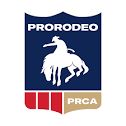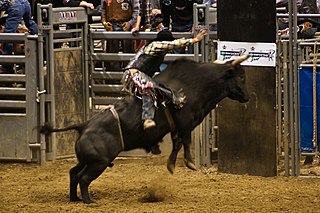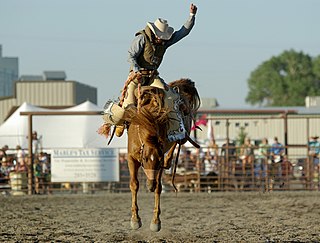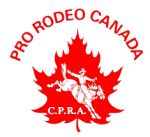
Rodeo is a competitive equestrian sport that arose out of the working practices of cattle herding in Spain and Mexico, expanding throughout the Americas and to other nations. It was originally based on the skills required of the working vaqueros and later, cowboys, in what today is the western United States, western Canada, and northern Mexico. Today, it is a sporting event that involves horses and other livestock, designed to test the skill and speed of the cowboys and cowgirls. American-style professional rodeos generally comprise the following events: tie-down roping, team roping, steer wrestling, Steer roping, saddle bronc riding, bareback bronc riding, bull riding and barrel racing. The events are divided into two basic categories: the rough stock events and the timed events. Depending on sanctioning organization and region, other events such as breakaway roping, goat tying, and pole bending may also be a part of some rodeos. The "world's first public cowboy contest" was held on July 4, 1883, in Pecos, Texas, between cattle driver Trav Windham and roper Morg Livingston.

Bull riding is a rodeo sport that involves a rider getting on a bucking bull and attempting to stay mounted while the animal tries to buck off the rider.

Bronc riding, either bareback bronc or saddle bronc competition, is a rodeo event that involves a rodeo participant riding a bucking horse that attempts to throw or buck off the rider. Originally based on the necessary buck breaking skills of a working cowboy, the event is now a highly stylized competition that utilizes horses that often are specially bred for strength, agility, and bucking ability. It is recognized by the main rodeo organizations such as the Professional Rodeo Cowboys Association (PRCA) and the International Professional Rodeo Association (IPRA).

Rodeos have long been a popular competitor and spectator sport in Australia, but were not run on an organised basis until the 1880s.
The National Finals Rodeo (NFR) is the premier championship rodeo of the Professional Rodeo Cowboys Association (PRCA). It showcases the talents of the PRCA's top 15 money winners in the season for each event.

The Professional Rodeo Cowboys Association (PRCA) is the largest rodeo organization in the world. It sanctions events in the United States, Canada, and Mexico, with members from said countries, as well as others. Its championship event is the National Finals Rodeo (NFR). The PRCA is headquartered in Colorado Springs, Colorado, United States.

The ProRodeo Hall of Fame and Museum of the American Cowboy was opened in August 1979 as a museum designed to "preserve the legacy of the cowboy contests, the heritage and culture of those original competitions, and the champions of the past, present and future." It is located in Colorado Springs, Colorado, and only inducts Professional Rodeo Cowboys Association and Women's Professional Rodeo Association members. It is the "only museum in the world devoted exclusively to the sport of professional rodeo."

Earl Wesley Bascom was an American-Canadian painter, printmaker, sculptor, cowboy, rodeo performer, inventor, and Hollywood actor. Raised in Canada, he portrayed in works of fine art his own experiences of cowboying and rodeoing across the American and Canadian West. Bascom was awarded the Pioneer Award by the ProRodeo Hall of Fame in 2016 and inducted into several halls of fame including the Canadian Pro Rodeo Hall of Fame in 1984. Bascom was called the "Cowboy of Cowboy Artists," the "Dean of Rodeo Cowboy Sculpture" and the "Father of Modern Rodeo." He was a participant member of the Church of Jesus Christ of Latter-day Saints.
The Raymond Stampede is an annual rodeo held in the town of Raymond, Alberta, Canada on July 1. It is recognized as Alberta's oldest rodeo and Canada's oldest professional rodeo, predating the famous Calgary Stampede by ten years.

Oscar Raymond Knight was a gold and silver miner, cattle rancher, large scale farmer, bank executive, industrialist, railroad executive, rodeo producer, rodeo stock contractor and rodeo champion. He was one of the Canadian Cattle Barons and considered one of the wealthiest cattlemen in the world.
Lewis Feild was an American professional rodeo cowboy. He specialized in bareback bronc riding and saddle bronc riding and competed on the Professional Rodeo Cowboys Association (PRCA) circuit. He was the World All-Around Cowboy Champion from 1985 to 1987 at the National Finals Rodeo (NFR). He was also the World Bareback Riding Champion from 1985 to 1986. The ProRodeo Hall of Fame inducted him in 1992 in the all-around category.
History of rodeo tracks the lineage of modern Western rodeo.
Reg Kesler began his rodeo career at the age of 14 at the Raymond Stampede, competing in the boys steer riding. At the time, it was common for cowboys to compete in many or even all the rodeo events, and Kesler was no exception as he grew into his rodeo career. He participated in all five major rodeo events of the time: saddle bronc riding, bareback riding, bull riding, tie-down roping and steer decorating, a precursor to steer wrestling. Kesler especially excelled in the roughstock events, namely saddle bronc riding and bareback riding, appearing in the top four in the Canadian standings in those events six times. He was also a successful competitor in the wild cow milking and wild horse racing, an outrider in the chuckwagon racing, and a well-known pick-up man. Kesler was a ProRodeo Hall of Fame and Canadian Pro Rodeo Hall of Fame inductee.
Martin Roy Wood was a rodeo cowboy from Bowness, Calgary, in the province of Alberta, Canada. The ProRodeo Hall of Fame inducted Wood in 1991. He was also inducted into the Canadian Pro Rodeo Hall of Fame in 1994. Wood died on August 10, 2019, in Pendleton, Oregon.
The Heart of the North Rodeo is located in Spooner, Wisconsin, United States. The rodeo takes place the first full weekend in July every year since 1954, except 2020. It is sanctioned by the Professional Rodeo Cowboys Association (PRCA). Fans from all over come to watch the professional cowboys and cowgirls compete in the seven main events of rodeo, and even some up-and-coming little cowboys and cowgirls.

A bucking horse is any breed of horse, male or female, with a propensity to buck. They have been, and still are, referred to by various names, including bronco, broncho, and roughstock.
Three Bars was a Canadian rodeo bucking horse that was specialized in bareback bronc riding. She was the Bareback Horse of the National Finals Rodeo (NFR) three times in 1967, 1973, and 1980. She was inducted into the Canadian Pro Rodeo Hall of Fame of the Canadian Professional Rodeo Association (CPRA) in 1989, and the ProRodeo Hall of Fame of the Professional Rodeo Cowboys Association (PRCA) in 2004.

The Canadian Professional Rodeo Association (CPRA) is the governing body of professional rodeo in Canada. Its championship event is the Canadian Finals Rodeo (CFR) held every November.
Grated Coconut #G-65 (1997–2024) was a Canadian rodeo bucking horse that was specialized in bareback bronc riding. He was a six-time Professional Rodeo Cowboys Association (PRCA) Bareback Horse of the Year. He was also a six-time Canadian Professional Rodeo Association (CPRA) Bareback Horse of the Year from. He was inducted into three halls of fame, including the ProRodeo Hall of Fame of the PRCA, the Canadian Pro Rodeo Hall of Fame of the CPRA, and the Ellensburg Rodeo Hall of Fame of the PRCA-sanctioned Ellensburg Rodeo.
Virgil F13 is a rodeo bucking horse. He is specialized mainly in bareback bronc riding, but is sometimes used in saddle bronc riding. Although born in North Dakota, United States, he has lived most of his life in Alberta, Canada. Virgil is a two-time Professional Rodeo Cowboys Association (PRCA) Bareback Horse of the Year, as well as a two-time Canadian Professional Rodeo Association (CPRA) Bareback Bucking Horse of the Year. He won the award in both organizations in the same years; 2017 and 2018. He was also awarded the Bareback Horse of the Canadian Finals Rodeo (CFR) four times from 2015 to 2018, as well as the Bareback Horse of the National Finals Rodeo (NFR) in 2017. He is also the horse that was ridden for the highest-scored bareback ride in PRCA history, which occurred in 2022.








